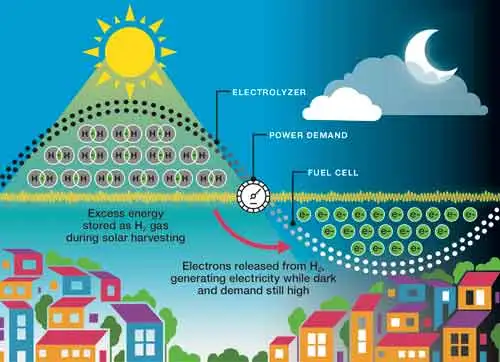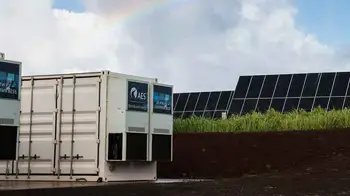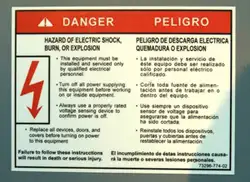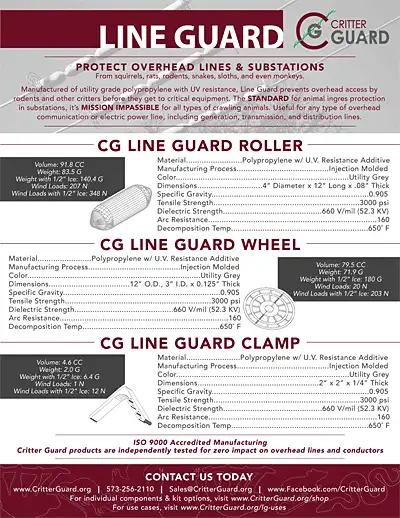Long Term Energy Storage Explained
By R.W. Hurst, Editor

Battery Energy Storage Testing and Maintenance for Solar PV Systems
Our customized live online or in‑person group training can be delivered to your staff at your location.

- Live Online
- 12 hours Instructor-led
- Group Training Available
Download Our OSHA 3873 Fact Sheet – Minimum Approach Distance and Training Requirements

- Calculate MAD using voltage and overvoltage values
- Ensure proper communication between host and contract employers
- Meet OSHA training requirements for qualified electrical workers
Long term energy storage supports renewable integration by storing excess electricity for days, weeks, or seasons. It improves grid stability, lowers costs, and ensures a reliable power supply for utilities, industries, and communities.
What is Long Term Energy Storage?
Long term energy storage is critical to achieving a stable and reliable power system that can accommodate high levels of renewable energy generation.
✅ Provides multi-day or seasonal storage capacity
✅ Supports renewable energy integration and grid stability
✅ Reduces reliance on fossil fuel backup generation
Defining Long-Term Storage Durations
In the energy industry, short-term storage typically refers to systems that last from minutes to a few hours, while long-term storage encompasses durations of 6–8 hours or longer. Seasonal storage solutions can last for weeks or months, providing strategic reserves of electricity to meet peak demand or prolonged periods of low renewable output. Establishing this classification ensures a consistent understanding when comparing technologies. Large-scale adoption depends on understanding energy storage and the grid, where integration challenges and market structures determine the long-term value of the system.
Different technologies used for long-term energy storage (ES) solutions help address the challenges associated with intermittent energy supply from renewable sources. Integrating long-term ES solutions with existing power grids requires careful planning and coordination. Long-term ES systems can have environmental impacts, and their cost-effectiveness depends on several factors. However, with continued innovation and deployment, long-term ES solutions can play a vital role in enabling the transition to a cleaner and more sustainable energy system. The rise of long-duration projects contributes to overall growth in utility-scale energy storage, reshaping how renewable energy is dispatched and consumed.
Test Your Knowledge About Energy Storage!
Think you know Energy Storage? Take our quick, interactive quiz and test your knowledge in minutes.
- Instantly see your results and score
- Identify strengths and areas for improvement
- Challenge yourself on real-world electrical topics
Energy Storage Systems Training
Technologies Used for Long-Term Energy Storage
Long duration energy storage (LDES) plays a vital role in providing backup power and delivering electricity when renewable sources like wind or solar are unavailable. By storing energy for days, weeks, or even months, these storage technologies enhance grid resilience and reliability. The Department of Energy has identified duration energy storage as a cornerstone of the clean energy transition, supporting research and deployment of advanced systems capable of balancing seasonal fluctuations. As innovation continues, long-term solutions for storing energy will ensure a stable supply, reduce reliance on fossil fuels, and accelerate the integration of renewable resources into modern power systems.
Different LTES solutions help address the intermittency of renewable energy. The most established and emerging options include:
Battery Storage
Lithium-ion batteries are widely used, but their economics favor shorter durations. Newer chemistries, such as flow batteries and sodium-ion, are being developed to extend duration and cycle life. Batteries are flexible and scalable across residential, commercial, and grid-scale projects. While lithium-ion dominates today, future long-duration solutions will likely rely on specialized battery energy storage systems designed for multi-day performance.
Pumped Storage Hydropower
Responsible for over 90% of global storage capacity, this technology moves water between reservoirs to balance supply and demand. Round-trip efficiency can reach 75–80%, making it one of the most reliable and proven forms of seasonal storage.
Compressed Air Energy Storage (CAES)
CAES compresses air into underground caverns and releases it to drive turbines. While efficient at a large scale, geological requirements limit site availability. New adiabatic CAES systems aim to recover and reuse heat for better efficiency. Alternative options, such as compressed air energy storage and thermal energy storage, are gaining traction as viable long-term solutions for integrating renewable energy.
Thermal Energy Storage
Thermal systems utilize heat or cold storage (such as molten salts, phase-change materials, or chilled water) to balance supply and demand. Coupled with concentrating solar power plants, molten salt storage can provide up to 12–15 hours of electricity dispatch.
Power-to-Gas
This method converts surplus electricity into hydrogen or synthetic methane, which is stored in pipelines or caverns for later use in power generation or transportation. While efficiency losses occur, it offers a true seasonal storage pathway.
Emerging and Next-Generation Solutions
Frontier technologies include thermochemical storage, metal hydrides, iron-air batteries, and hybrid systems that combine hydrogen with batteries. These are currently at the pilot or demonstration stage, but they promise lower costs and longer durations. Hydrogen-based systems offer a pathway to seasonal energy storage, making hydrogen energy storage one of the most promising technologies for a fully renewable grid.
Comparative Performance Benchmarks
| Technology | Duration | Efficiency | Typical Cost ($/kWh) | Lifetime (cycles) |
|---|---|---|---|---|
| Lithium-ion Battery | 4–12 hours | 85–90% | 200–400 | 5,000–10,000 |
| Flow Battery (vanadium, Zn) | 6–24 hours | 65–75% | 300–600 | 10,000–20,000 |
| Pumped Hydro Storage | 8 hours–months | 75–80% | 50–200 | 30–50 years |
| CAES | 10–100 hours | 45–70% | 100–200 | 20–40 years |
| Thermal (molten salt) | 6–15 hours | 35–45% | 50–150 | 30+ years |
| Power-to-Gas (H₂) | Days–months | 30–45% | 200–500 | 30+ years |
Innovative approaches such as gravity energy storage and flywheel energy storage illustrate the diversity of concepts being tested for extended-duration storage.
Advantages and Disadvantages of Long-Term ES Technologies
Each technology has trade-offs. Batteries offer fast response but limited scale. Pumped hydro provides massive capacity but needs specific topography. CAES and hydrogen enable multi-day storage but face efficiency challenges. Thermal storage works well with solar but requires dedicated infrastructure.
Economic Value and System Integration
The value of long-term storage extends beyond energy arbitrage to include capacity credit, ancillary services, grid deferral, and resilience. Modeling shows that as renewables increase, long-duration storage helps reduce curtailment, flatten price volatility, and offset peaker plants. System operators are increasingly evaluating storage as part of their capacity planning models.
Policy, Markets, and Deployment Barriers
The adoption of LTES depends on supportive policy and regulatory frameworks. Barriers include a lack of revenue certainty, outdated grid codes, and permitting challenges for large-scale infrastructure projects, such as pumped hydro. Incentives, tax credits, and capacity markets can encourage investment, while pilot programs demonstrate the bankability of projects.
Environmental and Lifecycle Considerations
Every technology carries lifecycle impacts. Mining for lithium and cobalt incurs environmental costs, pumped hydroelectricity alters ecosystems, and CAES may impact underground formations. Lifecycle analysis (LCA) helps compare carbon footprints, material intensity, and recyclability. New circular economy approaches, such as battery recycling and hydrogen production from renewable sources, aim to mitigate their environmental impacts.
Sign Up for Electricity Forum’s Energy Storage Newsletter
Stay informed with our FREE Energy Storage Newsletter — get the latest news, breakthrough technologies, and expert insights, delivered straight to your inbox.
Case Studies of Long-Term Storage
-
Bath County Pumped Storage Station, USA: Known as the “world’s largest battery,” this plant provides 3 GW of storage and illustrates the reliability of pumped hydro.
-
Hornsdale Power Reserve Expansion, Australia: Initially lithium-based, recent upgrades aim to enable long-duration operation and stabilize the integration of renewables.
-
Germany’s Hydrogen Storage Projects: Demonstrations of seasonal hydrogen storage show pathways for 100% renewable grids.
Risks, Uncertainty, and Future Outlook
Future costs depend on deployment scale, material prices, and financing models. Efficiency degradation, safety concerns, and lengthy permitting cycles add uncertainty. However, innovation and supportive markets are driving down costs. DOE’s Energy Storage Grand Challenge aims to achieve 500 GW of capacity by 2030, underscoring the government's commitment to scaling LTES.
Importance of Renewable Integration
As solar and wind reach higher penetration, long-term energy storage ensures they can deliver dispatchable, reliable electricity. By smoothing intermittency, balancing seasonal cycles, and providing backup, LTES plays a central role in the clean energy transition.
Frequently Asked Questions
What duration qualifies as long-term energy storage?
Typically, more than 6 hours, with some systems lasting weeks or months.
Which technology is most widely deployed today?
Pumped storage hydropower accounts for over 90% of installed capacity.
What is the efficiency of hydrogen storage?
Currently, 30–45%, but expected to improve with better electrolysis and fuel cells.
Are long-term systems cost-competitive yet?
Some, like pumped hydro, are proven to be effective. Newer systems rely on policy and innovation to achieve cost parity.
Related Articles








